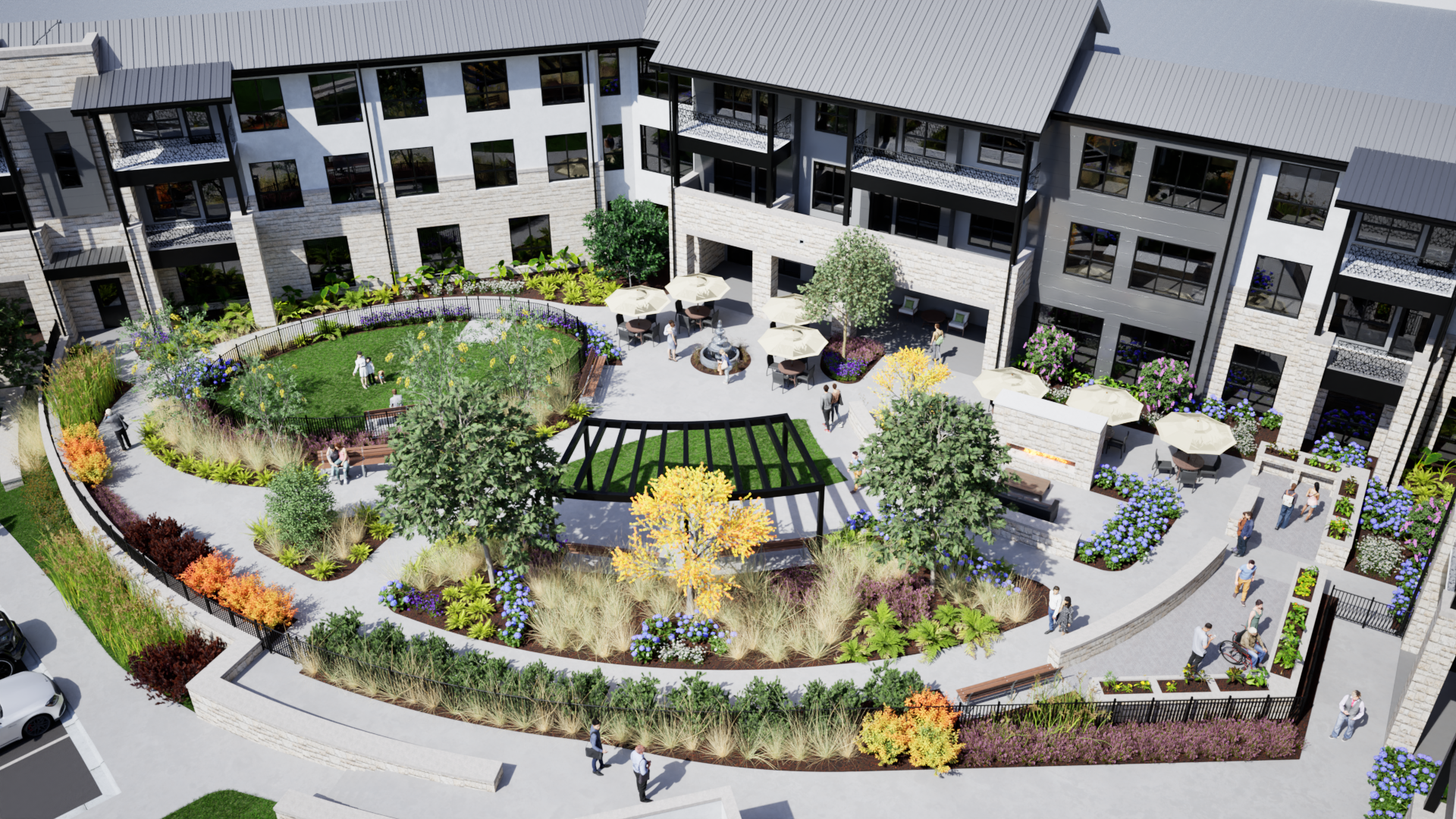Senior Housing: Where Are We Headed?
Shape your community now to create an environment that will appeal to the next wave of senior residents.
Anyone who has spent time in the seniors’ housing industry over the past 20 years will tell you that although many products are new (assisted living, memory care outside of a nursing home), we’ve come a long way, baby.
Consider the service model today compared to 1997, when the industry experienced a robust influx of assisted living development across the country. We were beginning to differentiate this new, licensed “residential living” model from the more traditional, institutional nursing home reputation.
What our customers experienced was the old information packet with a laundry list of features: wall to wall carpeting (listed as recently as 5 years ago), housekeeping and laundry services, 24 hour access to nursing, caregivers on site, scheduled activities, three nutritious meals per day, and a maintenance staff to remind you about monthly fire drill. Spanning the 90s and part of the 2000s, the “greatest generation” was a gracious, unassuming customer base that was just happy to be there. That demographic didn't push operators past their comfort zones, and perhaps that was a good thing, considering that the industry was in its infancy.
We are still infants compared to other health care service sectors, but don’t be fooled. This is the most critical stage of development for seniors’ housing in our short history. No matter which of many factors you analyze – volatile economic indicators, changing consumer priorities, the impact of technology on boomers’ daily lives, new attitudes about discretionary time and income, or other factors – we will be wise to come to the design, development, construction, and operations table prepared to deliver a completely reinvented product for this consumer profile. In other words, it’s time for the proverbial growth spurt. We’re lagging.
Consumer Preferences: More than just bingo night
If you’re an operator, a quick examination of the last 12 months of inquiry tracking might shed light on signs that our customer base isn’t the casserole and bingo type. Ask your sales professionals, those who interact with potential residents and their families more than anyone in our industry, when the last time was that they secured the move in based on the merits of wall to wall carpeting and the reassurance of medication supervision. As you examine those open leads, make a list of the two or three primary criteria, as offered by each prospect about their preferences. This is a rudimentary but essential drill that should involve senior management, regardless of product type, at least every six months. Communities and regional teams review this monthly, but I’m talking about the top levels of the organization personally conducting lead management review every 6 months, especially now as consumers are reinventing the industry.
When conducting your lead management “prospect needs/wants” review, also plan to reviewnotes on prospects that chose another location. They may be considered cold or archived leads, but we can still gain valuable data by reviewing their information.
As you begin your group discussion, make a list of areas your prospects did and didn’t specify as important to them. The following items are gaining ground as common themes among today’s prospective residents – see if you notice them in your lists:
1) Movie Theater Room They don’t care about the theater room. Don’t build it. It gets used as a staff in-service space. Today’s and tomorrow’s resident does not value communal movie watching.
2) Dining With the exception of serving nutritious meals for large numbers, there is little about the current “dining experience” that should be preserved. If the prospective resident hears “breakfast served from 7 to 8, lunch from 11:30 to 1:00 and dinner from 5:00 to 6:30,”one more time, they might laugh us out of town. The 2015 resident will eat when they want to, in a setting that is less congregate and more intimate. Why not design for that preference and offer a variety of dining venues throughout the community?
3) Apartment Design Remember yesterday’s resident who held out for the penthouse so they could keep every item from home? Not anymore. Tomorrow’s resident isn’t as emotionally attached to stuff, they will find the 1 BR with a side study adequate. They will sell most of their belongings before they move to Assisted Living and use the money to invest, give to their grandchildren, or fund their part time blog business.
Designers can maximize revenue in the floor plan by foregoing the 2 and 3 BRs for more 1 BR and studio deluxes. Another critical element to rethink is the “shared studios” or “semi-private apartments.” Don’t do it. Tomorrow’s resident will pay more to live in your smallest studio if it means they don’t have to share their personal space. Save the semi-private concept for hospital rooms.
4) Programs and Activities About 75% of the current curriculum should be reconsidered. Consider the following examples from resident program calendars: “Thanksgiving craft time,” “reminiscence hour,” “chair aerobics,” “mystery drive,” “food committee meeting,” “bridge tournament” and “movie and popcorn.” While these might be well received by your “greatest generation” resident, they hold zero value for the next wave of seniors.
Tomorrows resident isn’t keen to sit in a group working on crafts, they don’t even like crafts. Let’s overhaul our thinking about programs in general. Future residents will appreciate activities that are self-driven, inter-generational and tech based, activities that supports spiritual and emotional health, activities that stimulate the brain and personal fitness goals, and outdoor access programs.
5) Outdoors and Landscaping Don’t skimp on this. When buying land, skip the parcel that won’t provide opportunities to enjoy outdoor activities like walking, picnics andbird watching. Instead, choose the wooded lot that may cost more to develop, but will hold resale value over time thanks to expanded use of outdoor space.
During a community visit, I sat with a stately gentleman who was wheelchair bound, and was often seen enjoying coffee in the front café. He said, “I like it here because I don’t worry about keeping up with my health issues, but I miss being able to smell fresh pine trees whenever I want, or spending time by the river.” This accomplished businessman had loved weekends spent fishing, but now rarely enjoyed outdoor access due to the building design and inability of the staff to prioritize resident access to nature. Residents may already suffer lack of mobility and limited access to nature so it should be our priority to make the outdoors more accessible.
6) Memory Care Support Regardless of whether or not your community has a purpose built memory care program, seniors with dementia will represent a significant portion of the congregate care population by the year 2020. According the Alzheimer’s Association, someone develops Alzheimer’s Disease every 68 seconds. In the next two decades, the population of America’s seniors with Alzheimer’s is projected to grow from its current 5.4 million to 15.4 million, a 285% increase. Create and offer services and programs that meet the complex needs of seniors at all stages of Alzheimer’s Disease and other dementias. A lack of field expertise in this area will get you a low occupancy report card.
In the next 5-10 years, our prospects and current residents will serve as our best teachers as we pursue this new concept of design and service delivery. Let’s begin connecting with them today, so we can immediately begin the process of upgrading our product to meet their needs and preferences. It’s a dynamic industry that will only continue to grow in significance when you consider the fact that between 1990 and 2020, the population of adults aged 65 to 74 will grow seventy-four percent, according to Census Bureau projections. How will we accommodate such a dramatic increase in demand for seniors’ housing? Creating that supply-driven road map now will help support this new, cyclical influx of demand in a more meaningful way – a way that integrates rejuvenated product enhancements into a smarter aesthetic design.
Contributed by Tiffany Glatz President, Senior Provider Solutions
Tiffany Glatz is president of Senior Provider Solutions and a team member at Pivot SLE. She has 19 years of experience in the senior living industry in management, operations, marketing and product diversification communities across the United States. Tiffany can be reached at (512) 452-6402.
Reference Sources
Alzheimer's Association. 2012 Alzheimer's disease facts and figures. Alzheimer's and Dementia: The Journal of the Alzheimer's Association. March 2012; 8:131–168.
U.S. Department of Commerce. Census Bureau Report, Economics and Statistics Administration, in partnership with the National Institute on Aging. Aging in the United States. Past, Present and Future. February 1996.
Contact us here or call us at 512-231-1910














